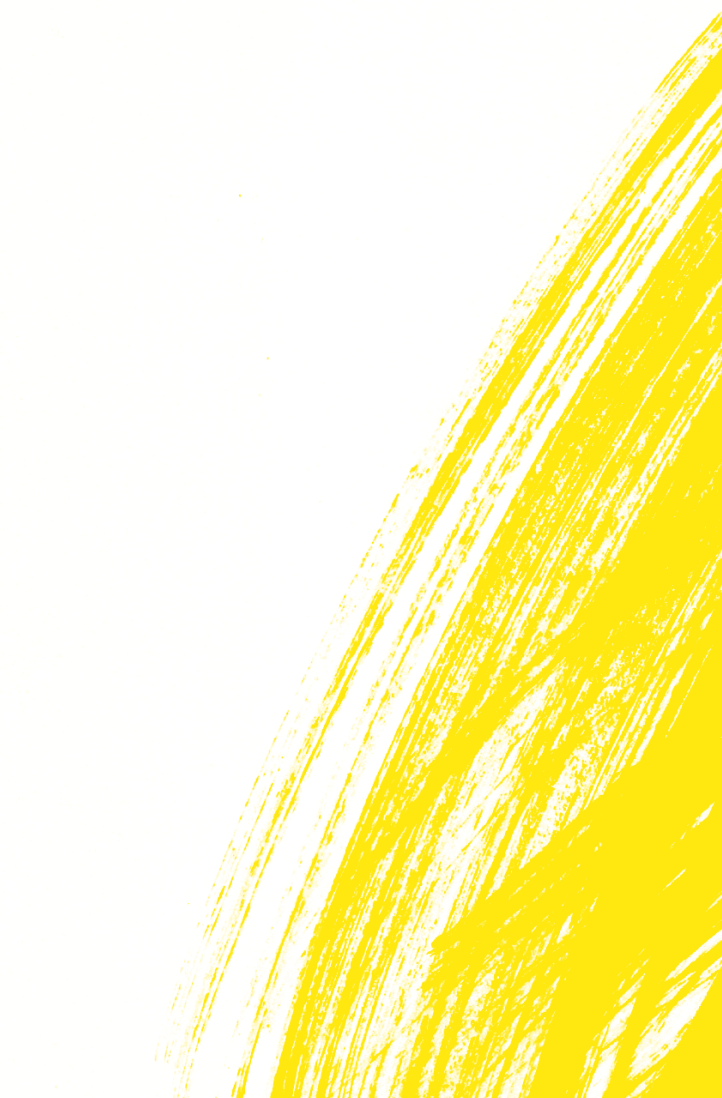
Curated by Pietro Ruffo
by Haley Durkee
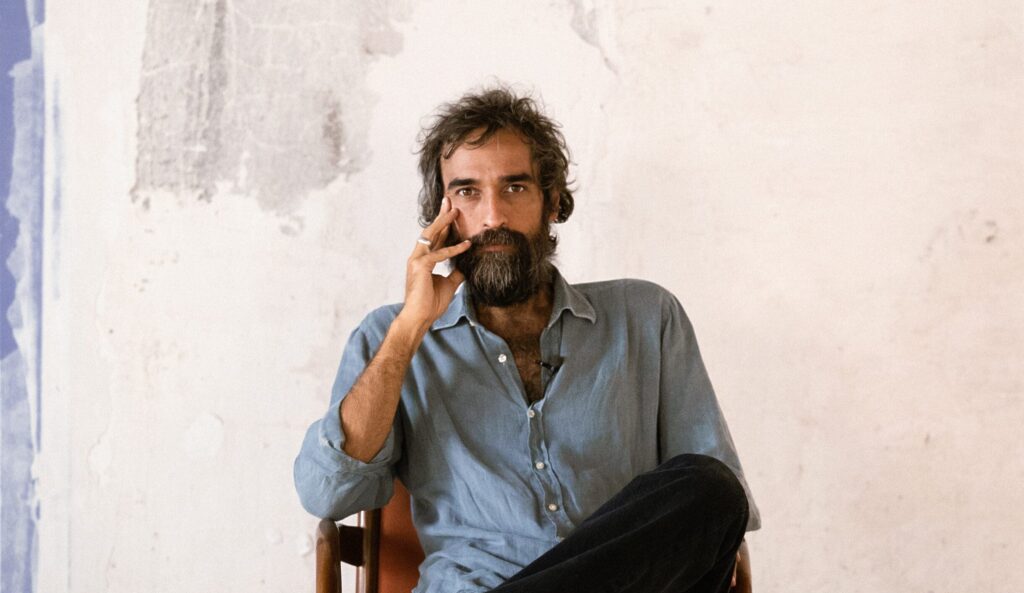
On a hot afternoon in late September, I find myself in a large industrial elevator with artist Pietro Ruffo and a small entourage of colleagues. We were seated only moments earlier in the sunshine outside a nearby San Lorenzo bar, inhaling what we collectively agreed to be the most heavenly plates of spaghetti ever served (at Ruffo’s recommendation) and are now making our way to his studio. Ruffo’s forthcoming debut as Signature Artist for art’otel Rome Piazza Sallustio is still a few months away, but the artwork has been complete for quite some time and we’re here to check it out. And, after that spaghetti, to get his take on everything we need to know about his hometown.
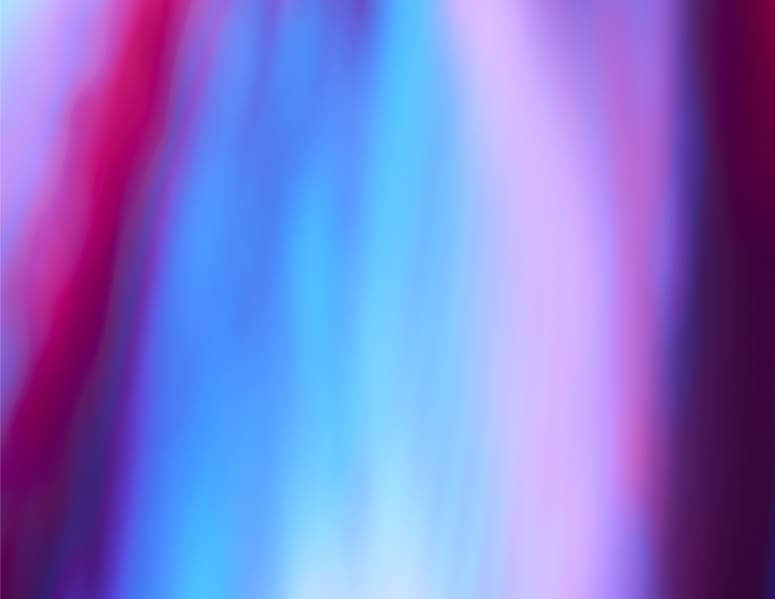
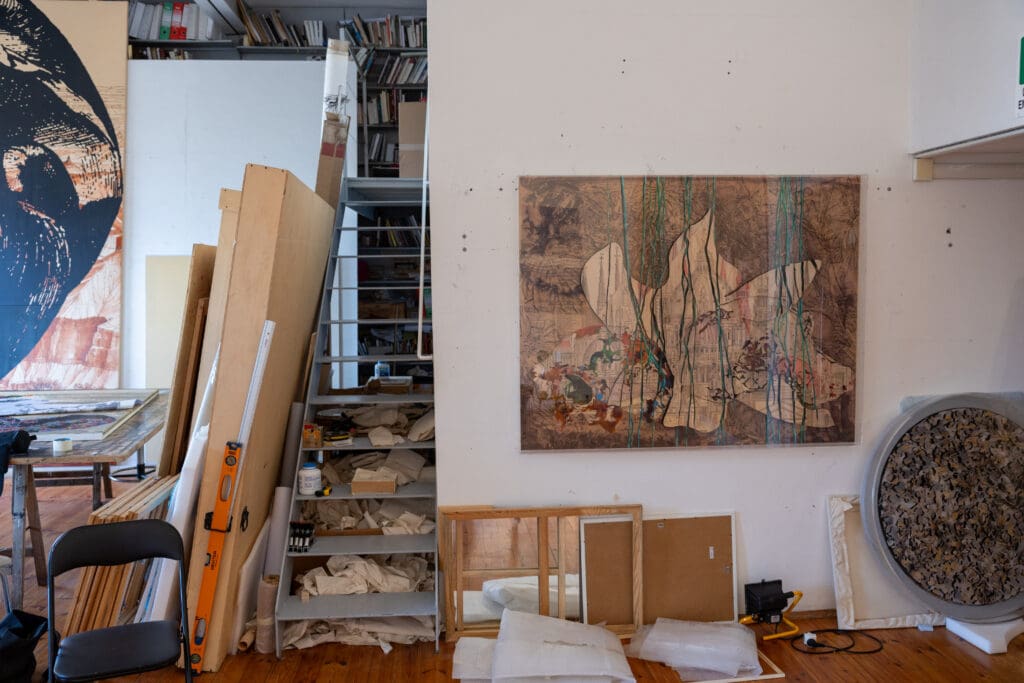
The studio is something of a dream for the creatively inclined. A sprawling open space with massive windows, two floors, a desk and shelves stacked with books and materials, it feels like an extension of Ruffo himself—a place with deep connection and history much like the city where it’s set.
For fans of the artist, it’s a living, breathing imaginarium of his most memorable pieces. The coveted-as-ever Dior “Around the World” collab. “The Clearest Way” on display at the Vatican Library (famously its first contemporary art exhibition). The Vogue-sanctified Valentino installation at Art Basel Miami. They all started here. And now I get to hear about his next great venture in the company of this esteemed archive.
Ruffo cuts a distinctively relaxed figure in a loose-fit shirt and jeans (with a hint of whimsy in the form of chicken-patterned socks) but, make no mistake, behind the casual appearance is a deep well of serious passion, skill, and expertise that got him to this position. And he’s one heck of an eloquent speaker, too. Of course, I don’t learn that until later because I don’t speak much Italian (save for a few key phrases courtesy of Duolingo), and he prefers to interview in his native language. Considering the pasta from earlier, I decide to trust him implicitly — even if I have no idea what he’s saying to me at the time. And suddenly the adage “when in Rome” manifests in the most literal way possible. It’s an apt note to start on.
"In Rome, every corner of the street is special because you always go from a great marvel to maybe some more gloomy corners. So there's a very, very strong exchange of energy that then becomes creative energy."

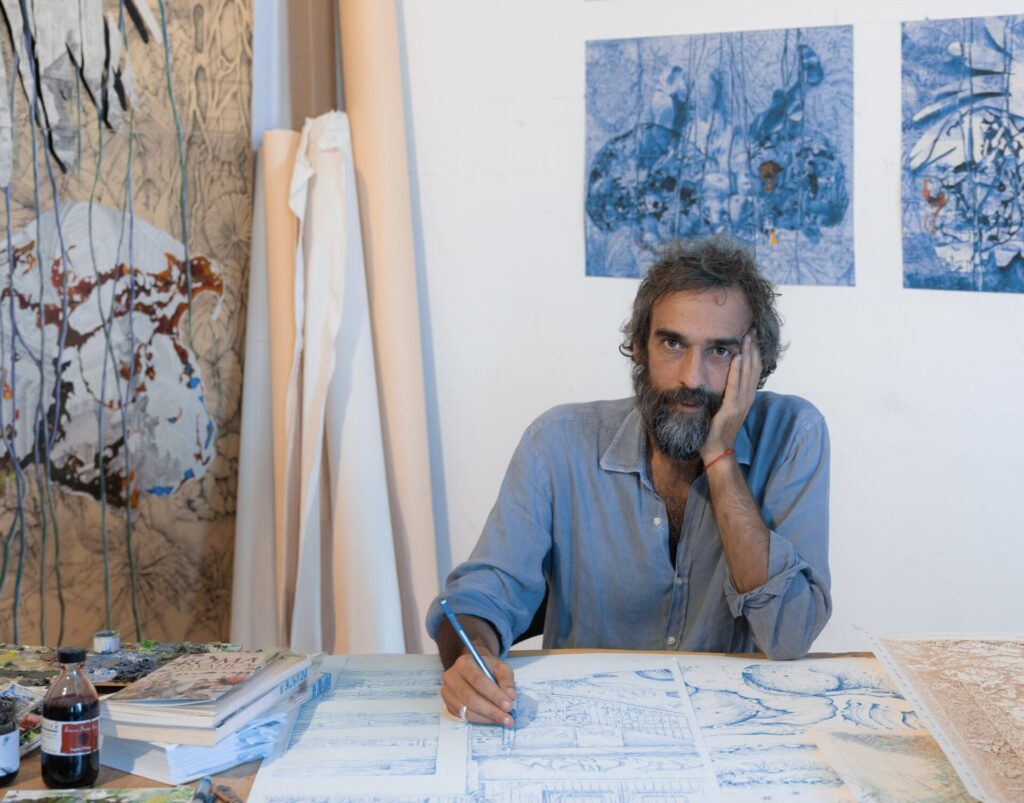
“The city of Rome has always influenced me a lot in my work. This is a strongly stratified city, where every century devours the previous one to come to life. It’s like a biological organism, always evolving.”
“A lot of history connects together, history from different periods, from different topics, to create a narrative. And this idea of a narrative, which is composed of many stories, has entered my work in a powerful way. Like the city, each of my works has various levels; various stories that intersect to create something larger.”
“Drawing has always been central in my artistic practice. Drawing not so much as a tool of representation of what is around us but, more than anything else, as a tool of knowledge of what is around us. You draw something to try to analyse it and understand it. And I believe that in my daily practice as an artist, even though I don’t always deal with topics related to Rome, but the way of working, that is, through the drawing, to debunk the themes that fascinate me, has remained the same. Drawing the old buildings, understanding the architectural layers. Rome has been my gymnasium.”
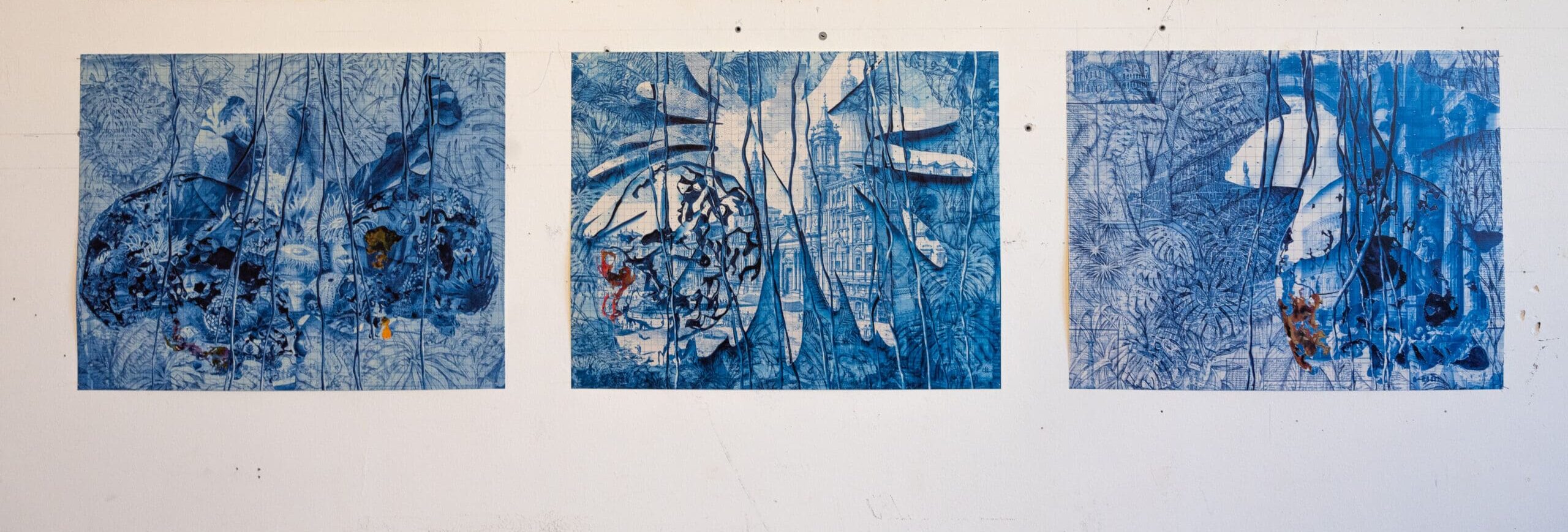

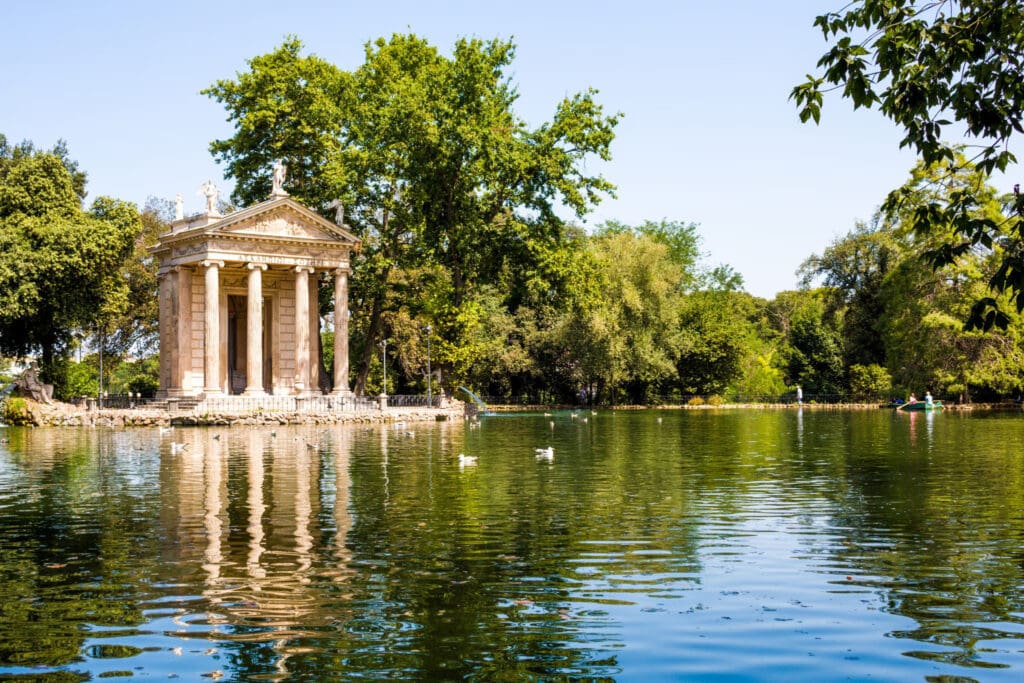
Places in Rome
“It’s a giant question. Let me try to focus on a couple.”
“In Rome, every corner of the street is special because you always go from a great marvel to maybe some more gloomy corners. So there’s a very, very strong exchange of energy that then becomes creative energy. There are various places that I love and have loved.”
“If I think of a place from my childhood, it’s definitely the National Gallery of Modern Art, where I spent entire afternoons. There was no entrance ticket, so I could go for free. I sat on their sofas and I was immersed in a context of wonderful contemporary art.”
“And right next to it, of course, is Villa Borghese, which is a park that I love a lot because it’s a park where some parts are cured, but other parts seem completely abandoned. That’s the aspect I like the most, when nature takes up its space and expresses itself without human constraints. And so these two places are two places that I love to go to and that have obviously marked my artistic career.”
"Why not make a football stadium inside the Colosseum, or something else? It is precisely in the reuse of things that these can be preserved, coming back to life instead of sitting there like mummies inside a museum.”


Historic Monument
“If I had to choose a monument from the past, I would like to mention at least two. The first is San Carlo alle Quattro Fontane, which is a tiny Baroque church where Francesco Borromini, perhaps one of our greatest architects, managed to express himself in an incredible way, revolutionizing the Renaissance tradition and taking great steps forward with respect to the architectural plastic discourse.”
“And the other place, perhaps, is the Pantheon, because the Pantheon is an example of the ability we have had to transform buildings instead of demolishing them.”
“We live in a strange period where, when a political government changes, we decide to take down the symbols of that government because maybe they are not congenial to the new society. Instead, the Romans were smarter, or perhaps lazier, they didn’t take down anything, but they converted everything. So, the Pantheon is a sort of architectural oxymoron.”
“What interests me in this building, in addition to being an architectural marvel, is precisely the fact that it is a symbol of how this building, which was a temple, was then transformed into a church and this has always been used.”
“And this has been our greatest ability, to use the old ruins to build the medieval towers, to build Renaissance palaces — think Palazzo Orsini, in Teatro Marcello — and therefore not so much to preserve something like in a refrigerator, but to use it, to continue to use it. Why not make a football stadium inside the Colosseum, or something else? It is precisely in the reuse of things that these can be preserved, coming back to life instead of sitting there like mummies inside a museum.”
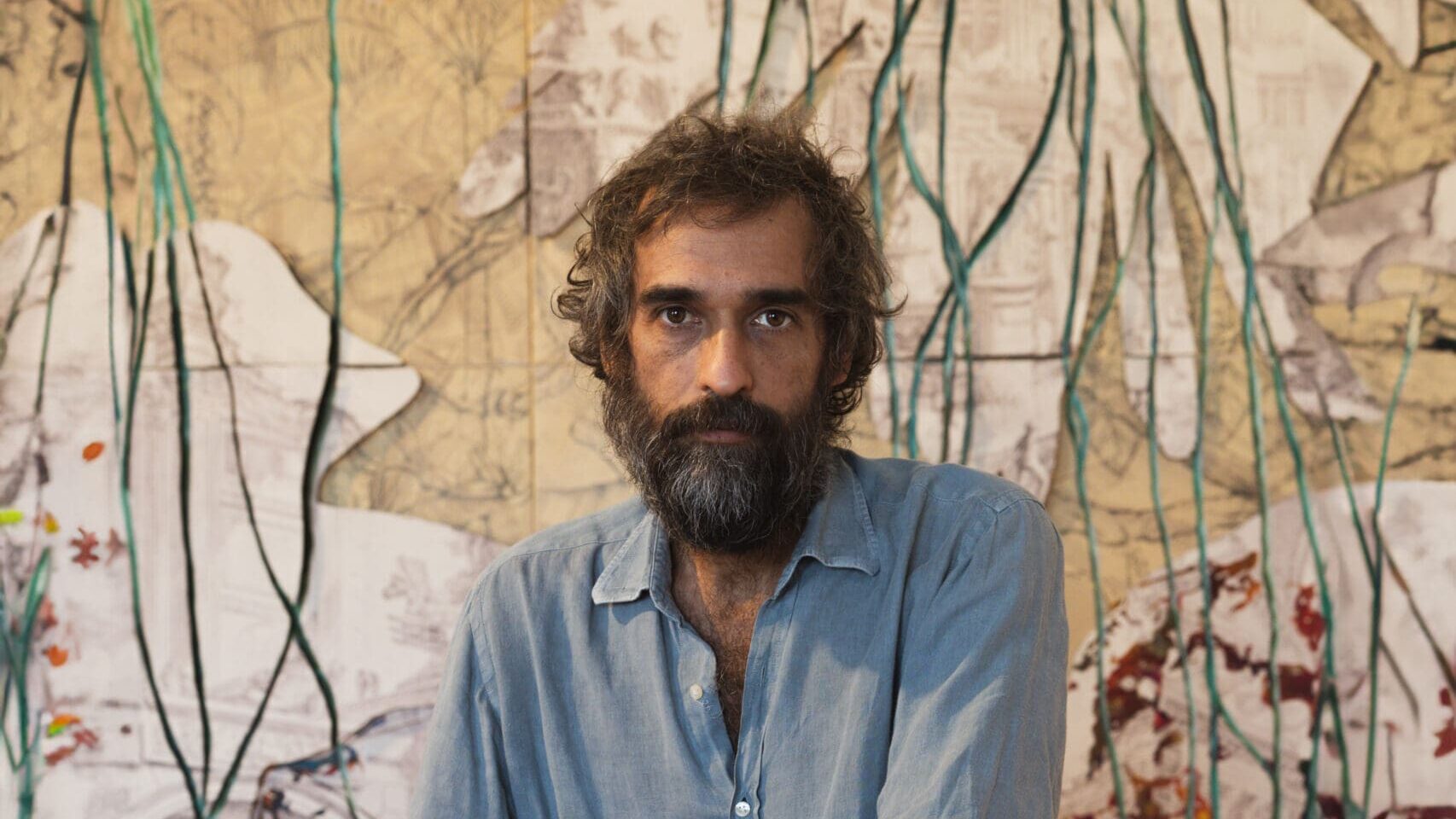
Clothes Shop
“This is more difficult than architecture! When I happened to work with fashion…the people who called me, I think they called me because they knew that I didn’t know anything about fashion. I was a sort of alien put in a world I didn’t know.”
“I inherited many of the clothes I wear from my father and my brothers who were older than me. I think I have shirts that are more than 40 years old and that know me better than I know myself.”
“If I must buy something new, I like to buy something that already has a history. Of course, there is Porta Portese, our biggest market. It’s not just a market on Sundays where you can find all kinds of objects but it’s also a place where you can find all kinds of clothes. I like to buy something that has already had contact with other people and not something that was just in the shelves of a shop.”

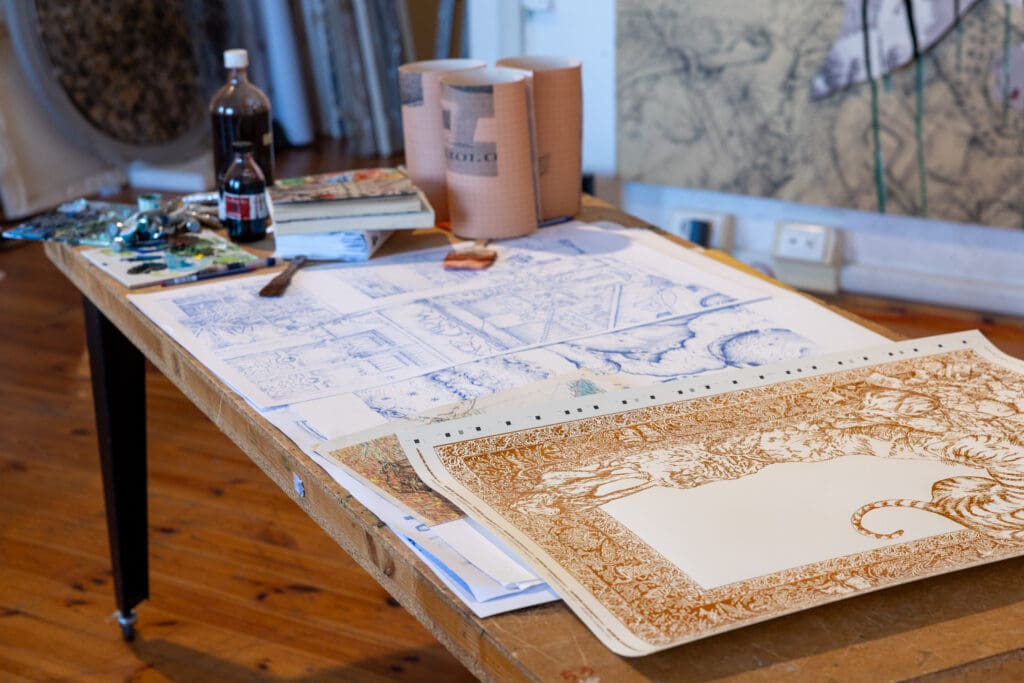
Material
“One of the aspects that ties fashion to art is craftsmanship. In the sense that the fashion that is done in Rome, for example, is not fast fashion but rather big fashion houses (like Valentino, who I’ve worked with) where there’s something like seven people working on one dress that comes to life in two or three months. This patience, as if it were a kind of rosary that is recited, is also part of my artistic practice alongside using very traditional materials. I mostly use paper, ink, chisels, cutters, pins…materials that could have been found 30, 50, 100 years ago.”
Art Supply Store
“My supply shop is Poggi which is a beautiful art shop in the centre of Rome. And there, of course, in addition to buying materials, is the relationship with the people who have worked there for a lifetime who are the first to advise you (depending on the effect you want to obtain) what kind of material to use. But what I would like to say is that everything remains in a very, very artisanal dimension.
Obviously, I also buy things on the internet. I’m not a prehistoric artist. But for me, the human contact is important.”
"The works that surround me, the works that I create, are different from me. They’re not me. I look at them and I’m amazed, I get angry, but they’re not a part of me… they’re something else."

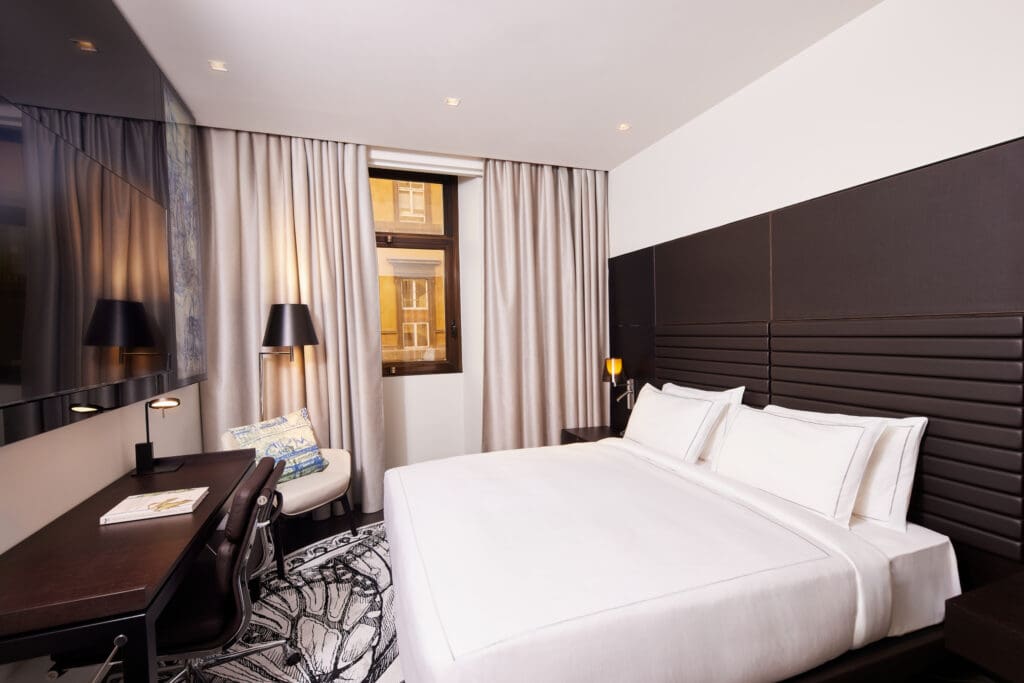
Artist’s Process or Finished Artwork
“In France they use a term which is ‘l’écart de l’imprévu’ which we could translate it as the “gap of the unexpected.” It refers to the unpredictable and unforeseen elements that arise during the creative process.
“I’m a trained architect so every piece of my work is strongly planned. It’s as if I’m trying to have a projection of the final result. But then, from this project to the result, it takes a month, two months, three months or maybe even a year. Everything that happens in this period — including my personal life or the people who come into my studio — is obviously part of that creative process. That’s the most exciting part.”
“When a piece of work is finished you frame it, you hang it on the wall, and you look at it as if it were your first time. With an inquisitive look, you try to understand what you’ve done as if you hadn’t done it yourself…as if you hadn’t spent so many days to make it. It separates itself from you and becomes something else. It’s a bit like having a son.”
“When you’re expecting a son, you think he’ll be a part of you. He’ll have your nose your mother’s eyes. When you have a son and you find him in your arms, and you live with him, you realise he’s like a relative in your house that you must get to know. He’s nice to you, but he’s not you. He’s not a part of your arm or a part of you, he’s just another person. And the works that surround me, the works that I create, are different from me. They’re not me. I look at them and I’m amazed, I get angry, but they’re not a part of me…they’re something else.”

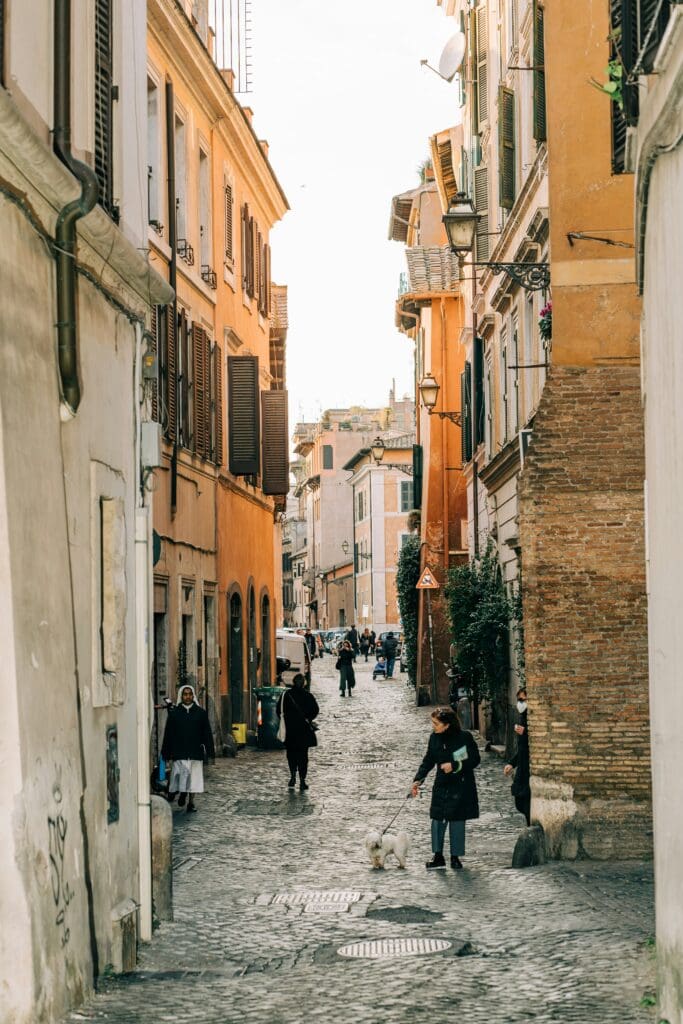
It’s a fitting metaphor for a man who is both a father and an artist in the midst of a colossal project. I look around the studio again and try to take in every detail of what’s to come. Earlier in the day we toured the hotel, still a construction site in most areas, while Ruffo narrated the future, and we imagined what that would look like. Here in the studio is where the vision is brought together and finally, it starts to make sense. It’s hard to look at an empty room and really “get” it—but when you see the collection up close and hear him speak with such aplomb about the thought behind it, you’re transported there.
“What I’m most passionate about with the art’otel project is its urban dimension. It’s a place that has a sort of responsibility within the urban fabric of Rome. Through so many works that are inside the hotel, I aim to help visitors get to know Rome in a different way. To look at Rome in a different way. More than anything, to come full circle with what we were speaking about earlier, the work is way to understand how much this city is constantly evolving.”
And to truly understand it is to see it for yourself. Book Rome from 6th March.